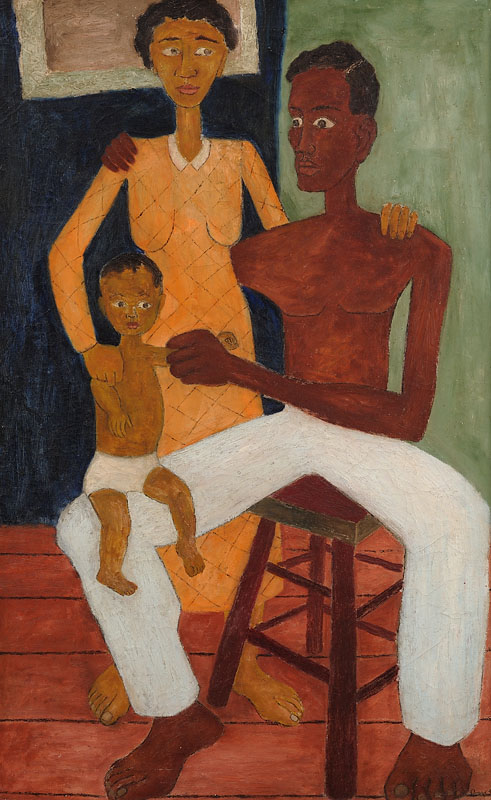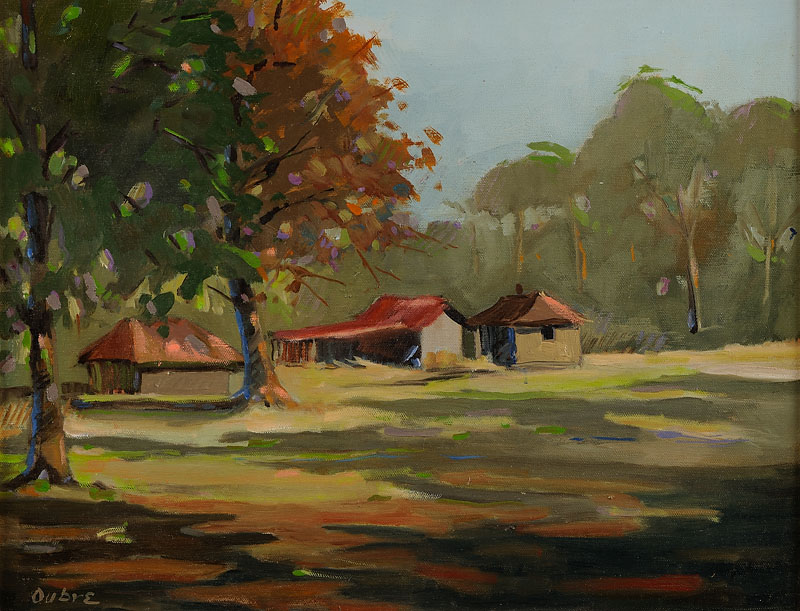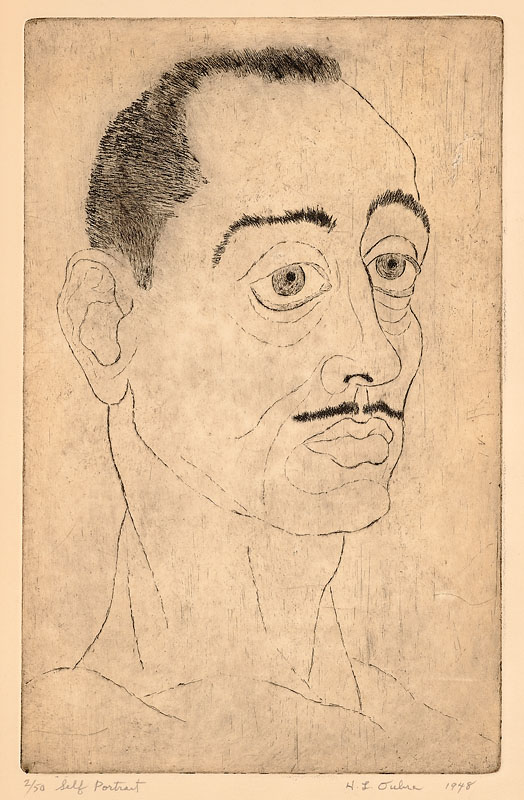Hayward Oubre (1916-2006)
Born to a family of African and French descent, Oubre’s youthful artistic talent was encouraged in the New Orleans parochial schools he attended. Following high school, he enrolled at Dillard University, where he was a standout member of the football and track teams, an illustrator for the college newspaper, and the institution’s first art major. Upon his graduation in 1939, Oubre continued his studies at Atlanta University, thriving under the tutelage of painter and muralist Hale Woodruff and sculptor Nancy Elizabeth Prophet, who encouraged Oubre to submit his work to the annual Atlanta University exhibitions. In 1941, Oubre was assigned to help with a special art initiative at Tuskegee Institute, where he met George Washington Carver, an admirer of the fledgling artist’s work. Oubre temporarily relinquished his artistic pursuits later that year when he was drafted into military service. Serving with the Army Corps of Engineers during World War II, Oubre joined 3,700 African American soldiers charged with building a 1500-mile military supply route—now known as the Alcan Highway—that connected Alaska to the continental United States. These soldiers labored under brutal conditions to complete the assignment in eight months. Thanks to the GI Bill, Oubre was able to continue his education in art at the University of Iowa, earning his master’s degree from the University of Iowa. He then launched a career as an art educator, teaching first at Florida A&M University, then at Alabama State College, and, later, at Winston-Salem State University, where he initiated a studio art program.
Deeply attached to his Southern heritage, Oubre relied on childhood memories as he composed paintings of African American life in New Orleans. His simplified, sometimes abstracted, forms reflect the artist’s familiarity with Picasso’s Analytic and Synthetic Cubism. Though he had been working with clay and wood to create closed-form sculptures, it was during his tenure at Alabama State College in the 1950s that Oubre began creating his acclaimed wire sculptures. Slowly and delicately shaping wire clothes hangers with pliers, the artist confronted structural challenges that demanded a considerable amount of strength and, at times, physical pain, to overcome. Nicknamed by his students as the “master of torque,” Oubre described his method in detail in his 1960 publication, The Art of Wire Sculpture. One reviewer writing of Oubre’s sculptures opined that “light and air are as critical to the work as the metal that gives them definition.”
During his thirty-year career as an educator, Oubre mentored countless aspiring African American artists, including Floyd Coleman who would later become the chair of Howard University’s art department. In an effort to provide his painting students with the proper learning material, Oubre developed and copyrighted “a concise study of color mixing and color relationships” a color wheel that updated and expanded the 1810 color triangle developed by Johann Wolfgang von Goethe. Though Oubre’s work was not widely exhibited during his lifetime, his oeuvre has attracted increased curatorial attention and examples of his work are represented in the collections of the Metropolitan Museum of Art, Mint Museum of Art, and University of Delaware. In 1993, the Pentagon honored Oubre and other surviving soldiers from the Alcan Highway battalion for their service.
Bio courtesy of www.thejohnsoncollection.org
Link to full bio: http://thejohnsoncollection.org/hayward-oubre/

Pensive Family
Oil on canvas
38x23 1/2 inches
1949
Signed and dated
Photo credit: John Wilson White Studio

Slave Cabin in the Woods
Oil on canvas
13 1/4X17 1/4 inches
Year unknown
Signed
Photo credit: John Wilson White Studio

Self Portrait
Etching
16x10 1/4 inches
1948
Signed and dated
Edition 2/50